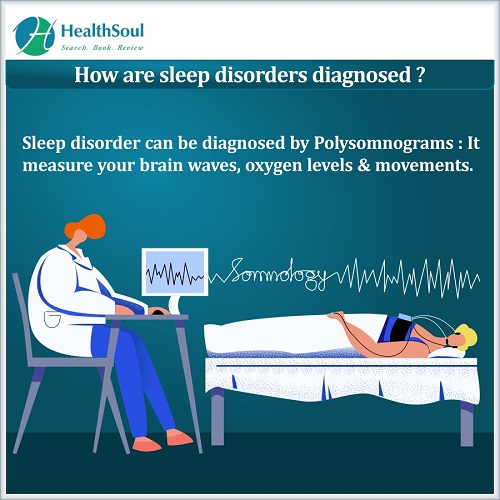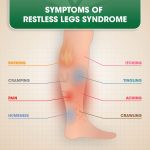If you’ve ever experienced trouble falling asleep or staying asleep, you may be wondering, “How are sleep disorders diagnosed?” Well, my friend, you’ve come to the right place! In this article, we’ll explore the fascinating world of sleep disorders and uncover the methods used by medical professionals to diagnose them. So, put on your pajamas, grab a cozy blanket, and let’s dive in!
When it comes to diagnosing sleep disorders, it’s not as simple as counting sheep. Medical experts employ a variety of techniques to unravel the mysteries of our sleep patterns. From comprehensive sleep studies to detailed examinations of our sleep habits and medical histories, the diagnostic process is a careful and thorough one. So, get ready to discover the secrets behind the detection of sleep disorders and get one step closer to achieving sweet dreams. Let’s get started!
How Are Sleep Disorders Diagnosed?
Sleep disorders can significantly impact a person’s quality of life, affecting their mood, energy levels, and overall well-being. If you suspect that you may have a sleep disorder, it is crucial to seek a proper diagnosis to understand the underlying causes and receive appropriate treatment. Diagnosing sleep disorders involves a comprehensive evaluation that considers various factors, including medical history, symptoms, and sleep patterns. In this article, we will explore the diagnostic process for sleep disorders and provide insights into the different methods used by healthcare professionals.
Medical Evaluation and History
When you visit a healthcare professional regarding your sleep concerns, they will typically begin by conducting a thorough medical evaluation and history. This involves discussing any existing medical conditions, medications, and lifestyle habits that may contribute to sleep disturbances. Your doctor may inquire about your sleep patterns, such as how long it takes you to fall asleep, how often you wake up during the night, and whether you experience excessive daytime sleepiness. Additionally, they may ask about any emotional or psychological factors that may be affecting your sleep, such as stress or anxiety.
During the medical evaluation, your doctor will also assess whether any underlying medical conditions could be causing or exacerbating your sleep problems. Certain medical conditions, such as sleep apnea, restless leg syndrome, or chronic pain, can significantly impact sleep quality. By addressing these underlying conditions, it may be possible to improve your sleep.
Physical Examination
In some cases, a physical examination may be necessary to identify any physical factors that could be contributing to your sleep disorder. For example, your doctor may examine your throat and airways to check for any signs of obstruction or abnormalities that could be causing sleep apnea. They may also assess your cardiovascular health and neurological function to rule out any underlying issues.
During the physical examination, your doctor may also evaluate other symptoms that could be related to your sleep disorder. For instance, they may check for signs of daytime fatigue, irritability, or difficulty concentrating, which are common symptoms of sleep deprivation.
Sleep Diary
A sleep diary can be a valuable tool in diagnosing sleep disorders. Your healthcare provider may ask you to keep a record of your sleep patterns and habits for a certain period, typically one to two weeks. In the sleep diary, you will note down the time you go to bed, the time you wake up, and any disruptions or difficulties you experience during the night. You may also track factors such as caffeine or alcohol consumption, exercise, and stress levels. This information can provide valuable insights into your sleep patterns and help identify any potential triggers or patterns contributing to your sleep disorder.
Sleep Study
If your healthcare provider suspects a sleep disorder, they may recommend a sleep study, also known as polysomnography. A sleep study is a comprehensive overnight assessment that monitors various physiological parameters while you sleep. This diagnostic test allows healthcare professionals to gather detailed information about your sleep architecture, breathing patterns, brain activity, and movements during the night.
During a sleep study, you will spend a night in a sleep laboratory or a specialized sleep center. Sensors will be placed on your scalp, face, chest, and limbs to monitor brain waves, eye movements, heart rate, respiratory effort, and oxygen levels. The data collected during the sleep study will be analyzed by sleep specialists, who will interpret the findings and provide a diagnosis.
Multiple Sleep Latency Test
In certain cases, a healthcare provider may recommend a multiple sleep latency test (MSLT) to evaluate excessive daytime sleepiness and assess the possibility of narcolepsy. The MSLT involves several short nap periods throughout the day, during which your brain activity, eye movements, and muscle tone are monitored. This test helps determine how quickly you fall asleep and whether you enter the rapid eye movement (REM) phase during these naps, which is characteristic of narcolepsy.
Other Diagnostic Tools
In addition to the methods mentioned above, there are other diagnostic tools that healthcare professionals may use to evaluate sleep disorders. These include:
- Actigraphy: This involves wearing a device on your wrist that measures movement and light exposure. It can provide insights into your sleep-wake patterns and circadian rhythm.
- Home Sleep Testing: In some cases, healthcare providers may recommend a home sleep test instead of an overnight sleep study. This involves using portable monitoring devices at home to assess breathing patterns, oxygen levels, and heart rate during sleep.
- Genetic Testing: In certain sleep disorders, such as narcolepsy, genetic testing may be conducted to identify specific gene mutations that are associated with the condition.
It is important to remember that diagnosing sleep disorders requires the expertise and guidance of a healthcare professional. They will consider your individual circumstances, symptoms, and test results to make an accurate diagnosis. Once a diagnosis is made, appropriate treatment options can be explored to help you achieve restful and restorative sleep.
Key Takeaways: How are sleep disorders diagnosed?
- Sleep disorders are diagnosed through a combination of medical history, physical examination, and sleep studies.
- Medical history involves discussing symptoms, sleep patterns, and any underlying medical conditions.
- A physical examination may include assessing breathing patterns, heart rate, and signs of sleep disorders.
- Sleep studies, such as polysomnography, monitor brain activity, heart rate, breathing, and movements during sleep.
- Diagnosing sleep disorders helps healthcare professionals determine the best treatment options for improved sleep quality.
Frequently Asked Questions
What are the common methods used to diagnose sleep disorders?
Diagnosing sleep disorders involves a combination of methods to accurately assess the individual’s sleep patterns and identify any underlying issues. The common methods used for diagnosis include:
1. Sleep history: The healthcare provider will gather information about the individual’s sleep patterns, including bedtime routines, sleep environment, and any symptoms experienced.
2. Sleep diary: Keeping a sleep diary can help track the quality and duration of sleep over a period of time. This information can provide valuable insights into sleep patterns and potential factors contributing to sleep disorders.
How does a sleep study help in diagnosing sleep disorders?
A sleep study, also known as polysomnography, is a comprehensive test that evaluates various physiological parameters during sleep. It involves spending a night at a sleep center, where sensors are placed on the body to monitor brain waves, heart rate, breathing patterns, and other sleep-related factors. The data collected during the sleep study helps healthcare professionals identify sleep disorders such as sleep apnea, insomnia, narcolepsy, and restless leg syndrome.
By analyzing the sleep study results, healthcare providers can determine the quality and quantity of sleep, identify disruptions or abnormalities, and make an accurate diagnosis. This information is crucial in developing an effective treatment plan tailored to the individual’s specific sleep disorder.
Can blood tests help diagnose sleep disorders?
While blood tests are not typically used as a primary method for diagnosing sleep disorders, they can be helpful in certain cases. Blood tests may be conducted to measure hormone levels, such as melatonin or thyroid hormones, which can impact sleep patterns. Additionally, blood tests may be performed to rule out other underlying medical conditions that could be contributing to the sleep disorder.
It’s important to note that blood tests alone cannot provide a definitive diagnosis for most sleep disorders. They are usually used in conjunction with other diagnostic methods to gather a comprehensive understanding of the individual’s sleep health.
What is a multiple sleep latency test (MSLT) and how is it used for diagnosing sleep disorders?
A multiple sleep latency test (MSLT) is a diagnostic tool used to assess daytime sleepiness and determine if an individual has a sleep disorder such as narcolepsy. During this test, the individual is asked to take a series of short naps at specific intervals throughout the day in a controlled sleep environment.
The MSLT measures the time it takes for the individual to fall asleep during these naps and assesses the presence of rapid eye movement (REM) sleep, which is typically associated with dreaming. The results of the MSLT help healthcare providers evaluate the individual’s daytime sleepiness and determine the appropriate diagnosis and treatment plan.
Are there any psychological assessments used in diagnosing sleep disorders?
Psychological assessments can be an integral part of diagnosing sleep disorders, especially those that are related to mental health conditions. These assessments may involve questionnaires or interviews conducted by mental health professionals to evaluate the individual’s emotional well-being, stress levels, and any psychological factors that may contribute to sleep disturbances.
By assessing the individual’s psychological state, healthcare providers can better understand the underlying causes of sleep disorders and develop a comprehensive treatment approach that addresses both the physical and psychological aspects. Collaboration between sleep specialists and mental health professionals is often necessary for accurate diagnosis and effective management of sleep disorders.
Sleep Disorders, Causes, Diagnosis, and Treatment
Final Summary: Diagnosing Sleep Disorders
After diving into the world of sleep disorders and their diagnosis, we’ve learned that identifying these conditions is no easy task. It requires a comprehensive approach that takes into account a variety of factors, including medical history, physical examinations, and specialized tests. By understanding the different methods used in diagnosing sleep disorders, individuals can seek proper treatment and improve their overall sleep quality.
One of the primary tools in diagnosing sleep disorders is the sleep study, also known as polysomnography. This test allows healthcare professionals to monitor various physiological parameters during sleep, such as brain activity, eye movement, heart rate, and breathing patterns. By analyzing the data collected during a sleep study, doctors can pinpoint the specific sleep disorder affecting an individual and tailor their treatment accordingly.
In addition to sleep studies, medical professionals also rely on patient interviews and questionnaires to gather crucial information about sleep patterns and symptoms. These personal accounts help provide valuable insights into the individual’s sleep habits and any potential underlying causes of their sleep disturbances. By combining objective data from tests with subjective information from patients, healthcare providers can form a comprehensive diagnosis and create an effective treatment plan.
In conclusion, the diagnosis of sleep disorders involves a multifaceted approach, utilizing a combination of medical history, physical examinations, and specialized tests. Sleep studies, patient interviews, and questionnaires all play a vital role in uncovering the root causes of sleep disturbances. By understanding the diagnostic process, individuals can work closely with healthcare professionals to identify and address their sleep disorders, ultimately leading to improved sleep quality and overall well-being. Remember, a good night’s sleep is the foundation for a healthy and energized life.



